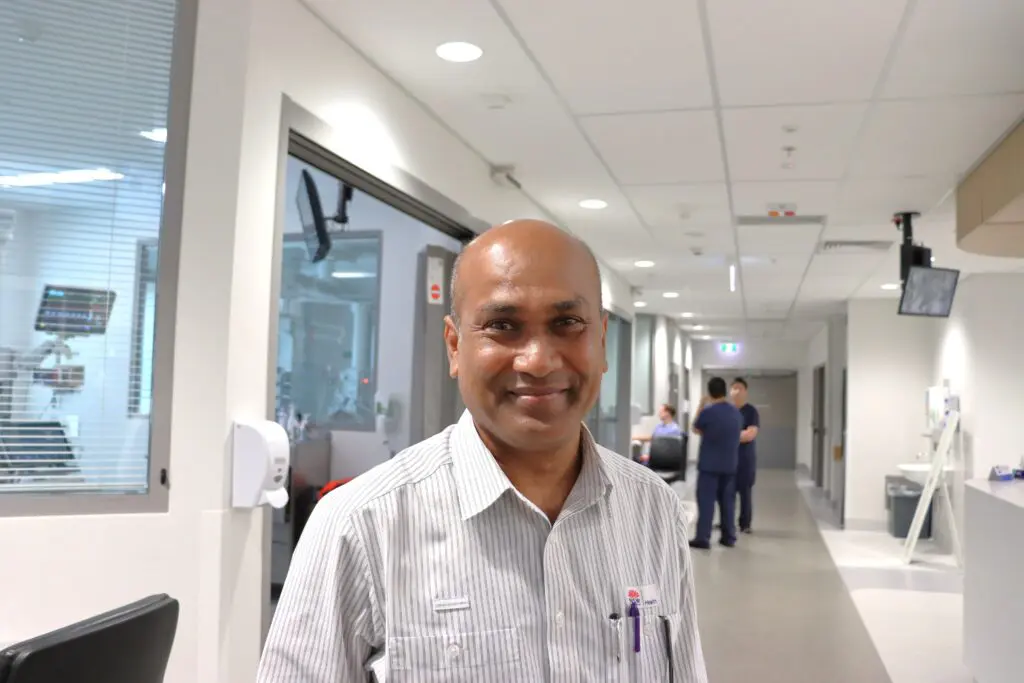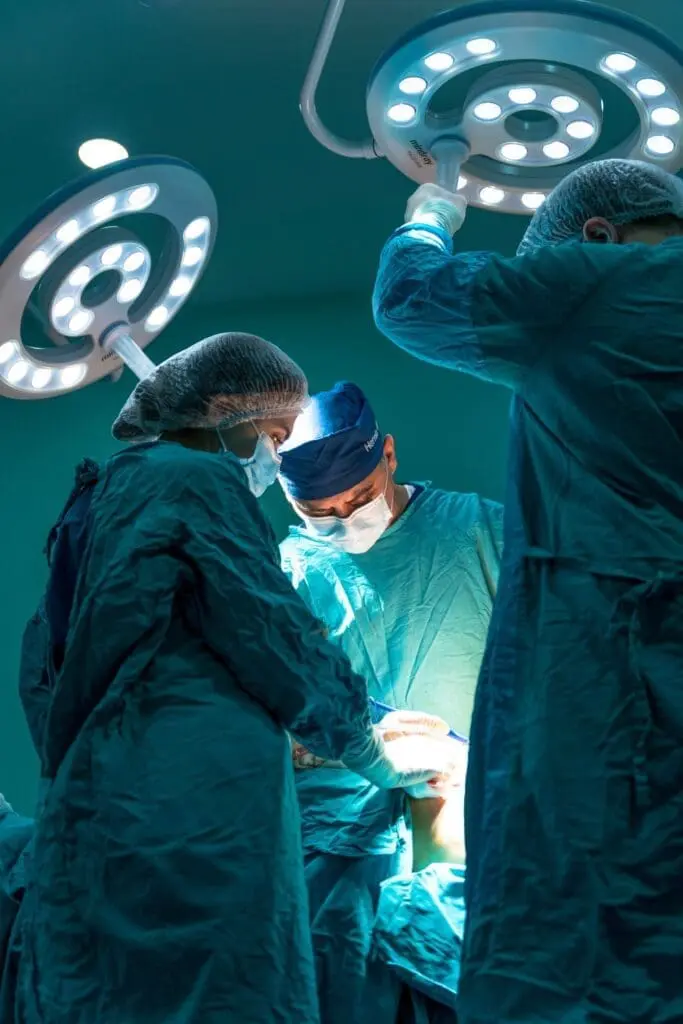
Jay Halkhoree, Nurse Unit Manager of the Intensive Care Unit (ICU) at Hornsby Ku-ring-gai Hospital (HKH), is known for his calm leadership, compassion and commitment to innovation in a fast-paced and constantly evolving healthcare environment. With 19 years of service at HKH, Jay has become a cornerstone of the hospital community – trusted by colleagues, patients and families alike. His journey to this leadership role reflects personal resilience and a strong commitment to improving outcomes for those in his care.
A surprising career start
Born in Mauritius, Jay was visiting his sister in the UK when he decided to stay. At 23 years old, his sister suggested he apply for a nursing position, despite Jay never having been in a hospital or knowing what nurses did. She applied on his behalf and after an interview, Jay was accepted into the Royal London Hospital, a major trauma centre in London, where he began his nursing training.
Jay became a Registered Nurse in 1993, starting his career in the hospital’s cardiothoracic unit. Over the next 13 years, Jay held several positions as a Nurse Educator and Nursing Unit Manager. As a Nurse Educator, Jay developed a supportive learning program that led to the recruitment of over 300 new graduate nurses within three years, and the program is still in use today.
Seeking a lifestyle change to a warmer climate, Jay moved to Australia and applied to Hornsby Ku-ring-gai Hospital where he worked for seven months before becoming the Clinical Nurse Consultant in the ICU. In 2012, Jay was appointed as the Hornsby Ku-ring-gai Hospital Intensive Care Nursing Unit Manager – a position he has held since then.
The ICU can accommodate a maximum of 12 patients and typically operates at 40-50% capacity. Depending on the complexity of the patient’s needs, care is provided on a one-to-one or one-to-two basis. However, there have been times when the complexity of the patient requires as many as five nurses and two doctors for one patient.
Managing the challenges in ICU
One of the biggest challenges Jay faces is managing staffing, equipment, and consumable resources within budget constraints. This has led him to think outside the box and do things differently while at the same time improving patient outcomes. As a result, Jay is constantly researching initiatives, guidelines and practices that he can adopt and bring into the ICU.
It takes a certain person to work under the pressure of managing staff and patients in the ICU. When asked how he stays calm when the alarms go off, he responds,
“We are trained for this, and I know what to do, so I don’t panic. I have a calm attitude, but I have confidence and experience in my skills.”
He is most proud of the robust infection control processes he has implemented which have reduced the rate of acquired infections in the ICU. By improving hand hygiene, he has reduced the use of gloves and aprons, helping to cut down on personal protective equipment and support sustainability.
The ICU redevelopment gave the team a chance to review how technology is used in daily tasks. Jay helped design the new unit so nurses could be stationed outside each patient’s room, allowing for more efficient monitoring.
Lifting patients is a routine part of ICU care and previously required up to eight nurses for tasks like pressure care or changing bed sheets. Jay introduced a safer, more efficient patient transfer system that reduced the strain on staff and improved safety for both patients and clinicians.
Early detection of pressure injuries in ICU patients
Pressure injuries are a major issue in the ICU, often leading to longer hospital stays and higher costs. Jay found a solution that has significantly improved outcomes for critically ill patients.
Pressure injuries typically develop in areas of the skin that cover bony areas, such as the heels, elbows, hips, and tailbone. Staying in one position for too long can cause pressure that damages the skin and underlying tissue.
These injuries can develop into ulcers that spread into deep tissues, eventually presenting as painful wounds. These wounds take a long time to heal, limit mobility, and can significantly impact a patient’s psychological well-being and quality of life. Because pressure injuries don’t always show on the skin at first, they were hard to detect early.
During his research into pressure injury management, Jay came across an article discussing the use of a sub-epidermal moisture (SEM) scanner. This small, wireless device can detect ulcers beneath a patient’s skin, allowing staff to take preventive measures and apply appropriate pressure care to stop ulcers from forming.


Jay also talked to colleagues overseas who had great success with this device. Seeing its benefits for his ICU patients, he contacted the Australian distributor and arranged a trial.
Each day, ICU nurses scanned patients’ heels and lower back for one second. The scanner detects fluid buildup under the skin up to five days before ulcers appear.
During a 12-month trial in 2022, 90% of scans identified patients as high risk who had been assessed as low or no risk by traditional methods. Jay said this allowed the healthcare team to take preventive measures well before any pressure sores appeared.
Every patient in the ICU was scanned daily, and since implementing the device in July 2023, Jay proudly reported that Hornsby Ku-ring-gai Hospital ICU has had no pressure injuries.
“We didn’t just decrease the number of people with pressure injuries,” said Jay. “We made it zero!”
Providing patient-centric care in the ICU
The device, says Jay, is an extraordinary piece of technology, and there is only one of its kind in the world.
Hornsby Ku-ring-gai Hospital is believed to be the first public ICU in Australia to use the SEM scanner, and Jay has shared his findings with the district for wider consideration.
Jay wants to build ICU nurses’ confidence by using tools like the SEM scanner, which has greatly improved patient care. Better communication and teamwork help raise the quality of care and lead to improved patient outcomes.
“Jay continues to focus on researching new equipment and practices that will translate into person-centred care, ultimately improving patients’ overall hospital experience,” says Maria Manna, Deputy Director of Nursing & Midwifery at Hornsby Ku-ring-gai Hospital.
If you would like to support innovative treatments that transform patient lives, please make a donation here.
